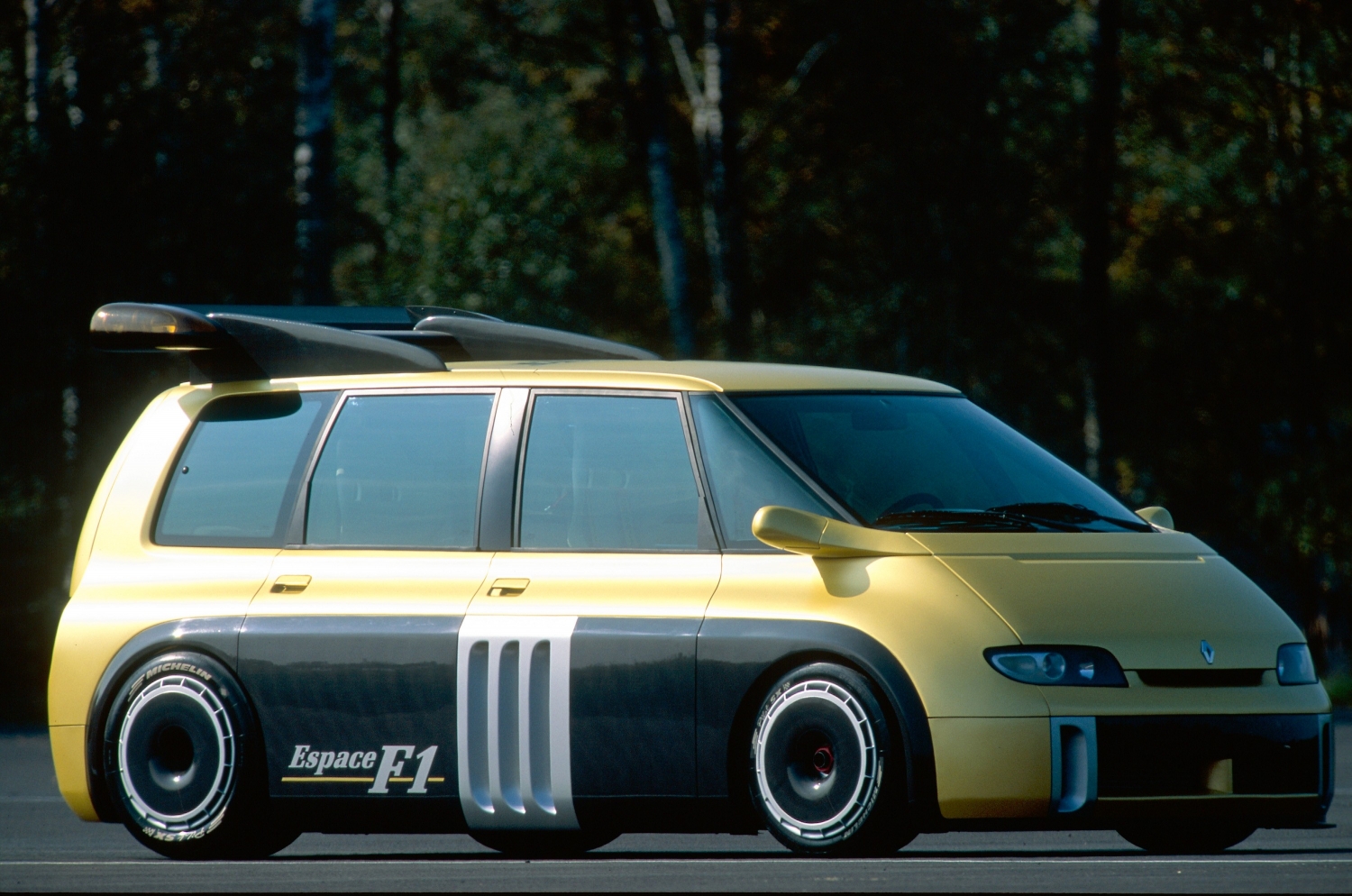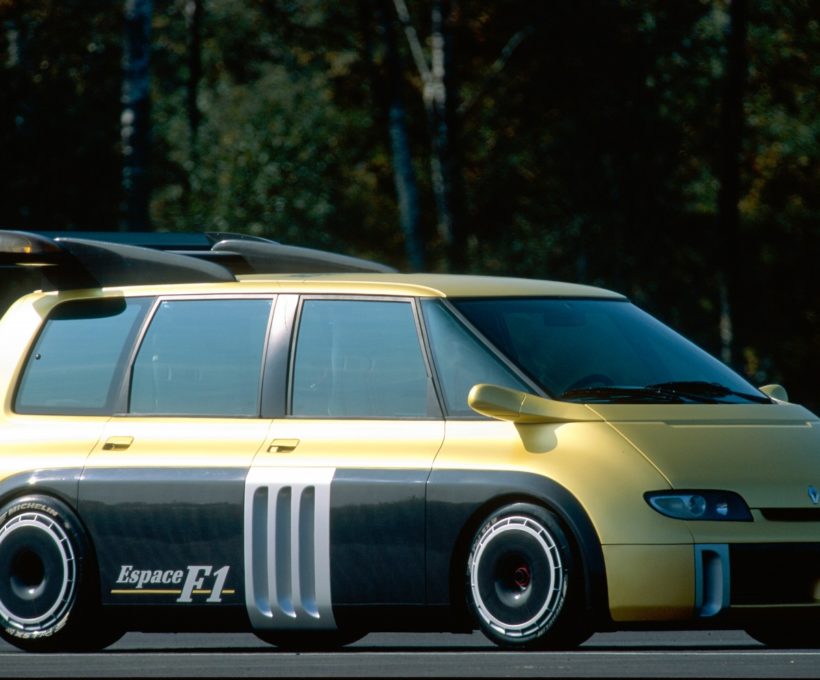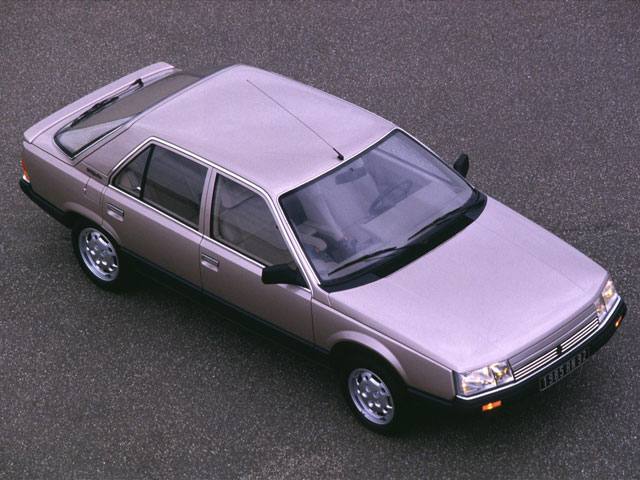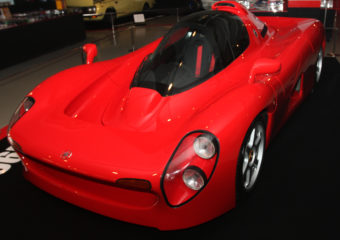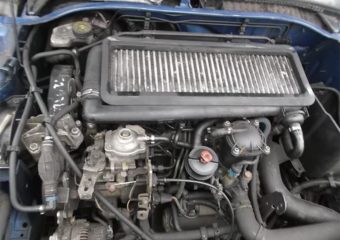It’s easy to forget these days that there was a time when SUV’s didn’t rule the road. Families up and down the UK flocked to their local Renault dealerships to buy an Espace in the mid 1980’s, arguably the first MPV (or people carrier if acronyms aren’t your thing). 10 years after it’s introduction, and to celebrate it’s involvement with Formula 1, Renault introduced the Renault Espace F1.
Full disclosure: The Renault Espace F1 doesn’t really have much to do with the actual Espace your parents drove you to school in, other than the name and the vague styling of it. So if you’re here for a trip down memory lane of a car you threw up in because you had too many Jelly Babies while you went on holiday to Dorset, then I’m afraid you may be disappointed.
A concept from the 70’s
The story of the Renault Espace F1 starts with celebrating 10 years of the Renault Espace. It started as a concept, designed by Fergus Pollock (who also designed the sexy Jaguar XK8) for Chrysler in the UK. They then asked Matra to further develop the concept.
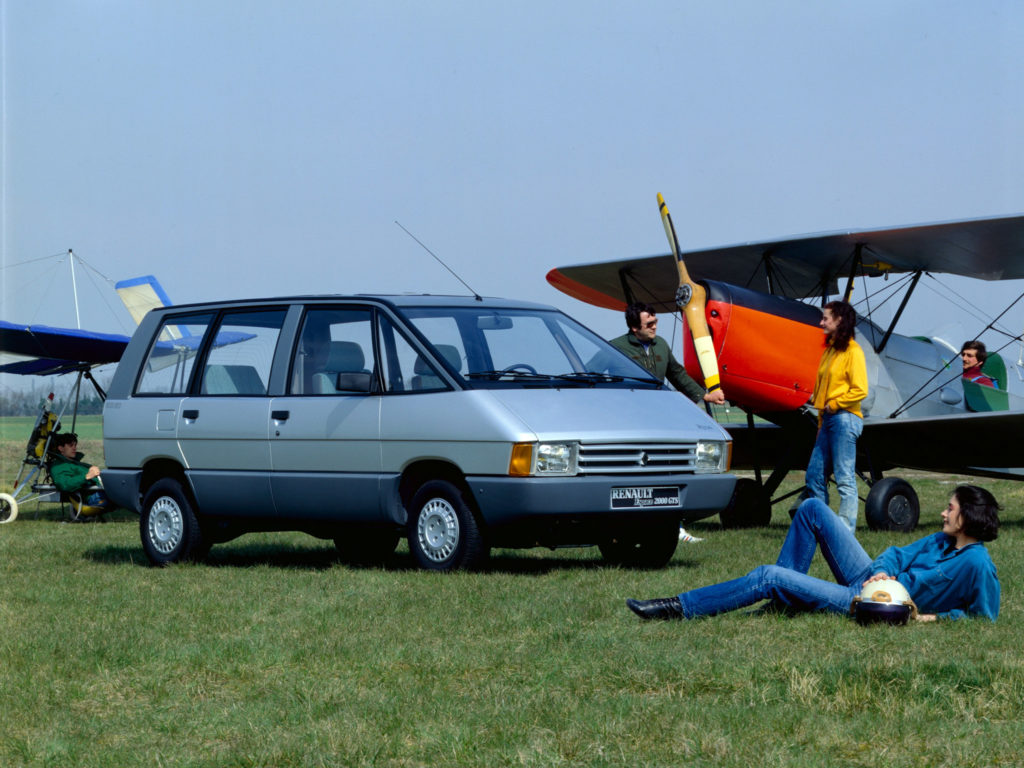
In 1978 Chrysler’s UK division was sold to PSA, and they decided that it was far too “out there” as a concept to proceed with. Considering that they were dealing with Citroen at the time with their wild ideas for vehicles, one child was enough and the design was passed back to Matra. Matra then approached Renault with the idea, and together they pushed forward with the development of the Renault Espace, which was then released in 1984.
Sales of the Espace were slow to start with. Incredibly slow actually, with Renault only shifting 9 models in the first few months of the car going on sale. However, press reports were positive and tickled the interest of families who saw the Espace as a versatile vehicle for the family. Handy for sunday trips to the local tip, extremely handy for stocking up on cheap booze at the hypermarket in Calais on the way back from holiday too.
The Renault Espace F1 – Celebrating the Espace and F1
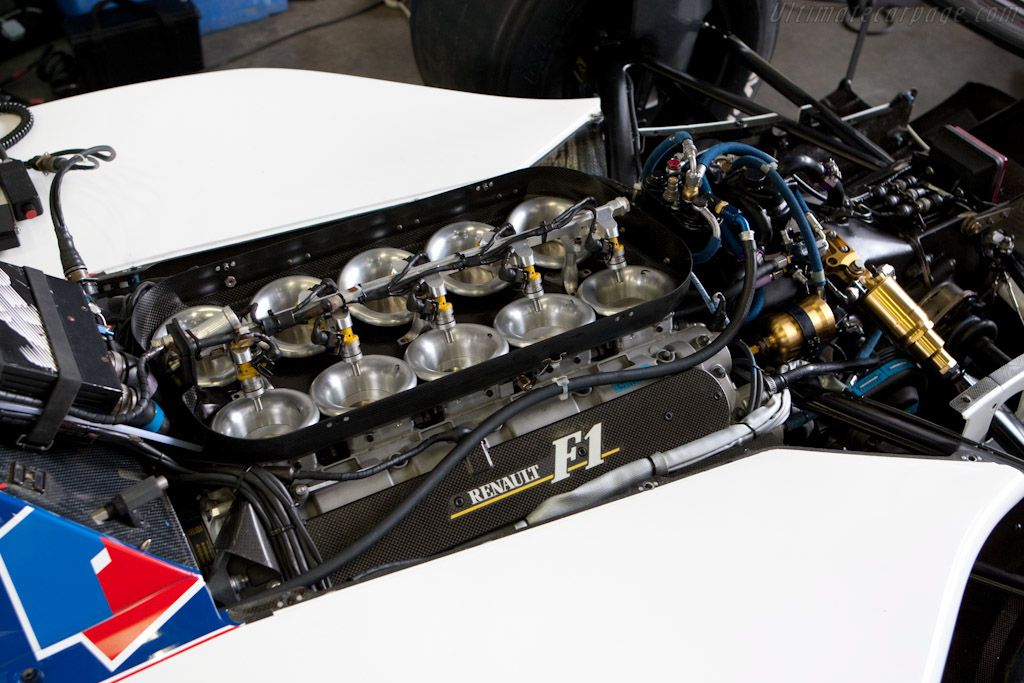
Fast forward to the early 1990’s, the Espace is an incredibly popular car. Not only this, Renault have decided that their road cars need to make more of it’s involvement with Formula 1. Having introduced turbo engines to the sport from their debut in 1977, by the 1990’s they had become a literal powerhouse, powering Williams to the front of the grid. Manufacturers are always looking for ways to use sport as a way to sell cars and to show that their technical innovations make their way to their road cars.
I’d have loved to have been in that meeting, where one bright spark suggests to the other “Shall we stick the F1 V10 engine in to the back of an Espace?”, and for the Pernod and Gitannes to have flooded the offices while they set to work to making a dream a reality.
The Renault Espace F1 has more in common with the Williams FW15C
Renault, with the help of Williams Engineering, set to work developing the Renault Espace F1 concept. The chassis of the Espace F1 was developed completely out of carbon fibre, providing just as much (if not more) strength than the Espace’s fibre glass body. It also meant that the Espace F1 was incredibly lightweight. I can’t find a specific weight for it on the internet, but considering the power it had, I don’t think it matters!
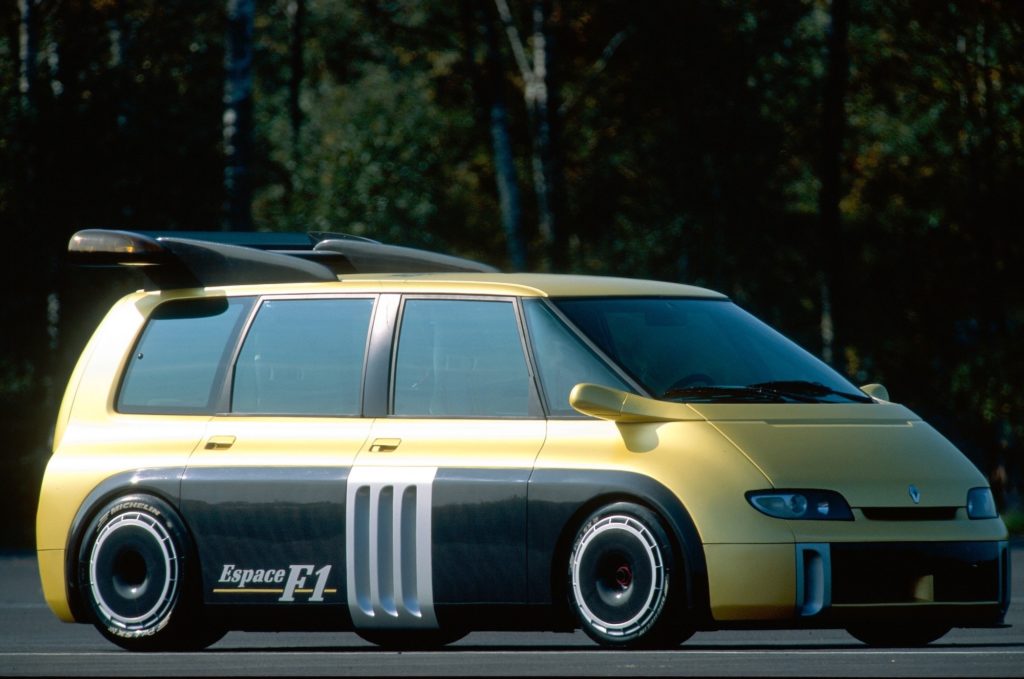
The engine was the same Renault F1 engine that powered Alain Prost to the F1 Driver’s title in 1993, and it was located in the middle of the vehicle. Power was increased from the racing F1 engine, pumping out over 800bhp – the F1 engine produced 760bhp. But considering this was a concept and it didn’t have to beat Michael Schumacher in his Benetton Ford, it could afford to be more powerful and give two fingers to reliability.
A car is nothing, even with a mighty engine, without a gearbox. The gearbox for this leviathan of a people carrier was, again, taken from the Williams FW15C. A 6 speed semi-automatic gearbox that handled the increased power and allowed the Renault Espace F1 to get to 62mph in just 2.8 seconds. To put this in to perspective, there are people driving Tesla Model S to 60mph in 2.3 seconds. It’s taken just over 20 years to give the Renault Espace F1’s power to the great unwashed of society.
A concept with fond memories for Gran Turismo 2 players
The first time I came across the Renault Espace F1 was in about 2002. I managed (finally) to get a Sony PlayStation and got a copy of Gran Turismo 2 from Cash Converters for £5. I played that game religiously, in between trying to do school work and trying to win the World Cup with Ireland on Championship Manager 99/00. I went through each race, beating the computer and after every race win you would sit there wondering what car you’d be gifted.
One day, I can’t remember the race, but I remember thinking “Why have I got a people carrier?”. I won the Renault Espace F1. For a laugh, I thought, why not take it for a spin? I did, and I honestly thought something was up on the game. I couldn’t get over how fast this computerised car was. It must be a wind up, but it wasn’t until I got to school the next day to use their internet I could go on Ask Jeeves and search for the Renault Espace F1.
The Renault Espace F1 isn’t just a concept left on the drawing board or as a clay model on the floor of an office. It was built, and has been driven several times. Including, famously, by David Coulthard with his boss Sir Frank Williams as a passenger. As you can see in the video below. While narration is on the light side, just listen to that engine. It really is sublime.
While Renault and Williams no longer work together after the halycon days of the 1990’s, the motoring and gaming worlds are all the better for their collaboration on the Renault Espace F1. While Mercedes released something similar recently, in my eyes it’s just not as cool as the Espace. It doesn’t sound half as good for a start, and is far less practical for taking the kids to school!

